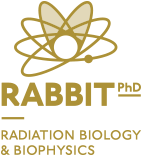Experimental Set-up
Electron transfer experiment in atom-molecule collisions
The electron transfer experiment consists of two high-vacuum pumped chambers: the potassium chamber and the collision chamber. We make use of a crossed molecular beam technique, where a fast hyperthermal atomic beam (potassium), produced in a resonant charge exchange chamber, crosses at right angles an effusive molecular target in the collision chamber.
The intensity of the primary beam (potassium) is monitored by an iridium surface detector, especially designed for alkalis. The molecular beam target (secondary beam) is produced by effusion of a gas, liquid or heating a solid sample in an oven. The ions formed in the interaction region (positive and negative) are extracted into a homemade TOF and mass analysed. Kinetic energy release distributions may also be obtained.

High Resolution Electron Energy Loss Spectroscopy
The HREELS experiment consists of one high-vacuum chamber with an electron monochromator capable of an energy resolution of 30 meV. We make use of a crossed molecular beam technique, where the electron beam is scattered by an effusive molecular target. The electron energy loss is probed by an hemispherical analyser.

He(I) Photoelectron Spectroscopy
The PES experiment consists of a high-vacuum chamber coupled with a He(I) source. The spectrometer consists of a 180° cylindrical electrostatic analyser with a mean radius of 5 cm. The analyser is used in constant energy pass mode.
The incident photons are produced by a D.C. discharge in a two stage differentially pumped lamp. The energy scale is calibrated using the well-known argon lines (2P3/2 and 2P1/2) and the resolution at the full width half maximum (FWHM) of the Ar peaks is usually as best as 30 meV. The accuracy of the energy scale is estimated to be ± 2 meV.




